A good landscape photographer is always well prepared. Don’t leave home without these ten items.
10. Filters for Black & White: If you’re planning on taking black and white photographs, you’ll want yellow, red, and orange filters to darken the sky, and green to emphasize the different shades of green in the vegetation.
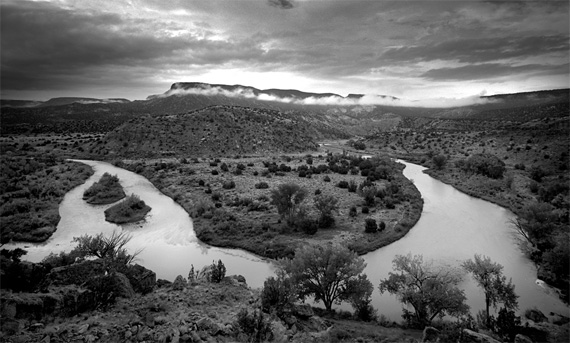
“Horseshoe Bend on the Rio Chama” captured by nathan mccreery (Click Image to See More From nathan mccreery)
9. Neutral Density (ND) Filter: An ND filter allows you to use a slower shutter speed to blur moving water and make it look wetter.
8. Filters for Color: A graduated filter will allow you to even up the lighting between the sky and the ground. When the ground is covered with snow or ice, put the dark area at the bottom. At all other times, put it to the top. A polarizing filter will reduce reflections on glass or water (but not polished metal) and will make the sky bluer without affecting other colors. The effect is most pronounced at 90 degrees to the sun.
7. Spare Batteries: When you have a magical landscape in front of you, it’s infuriating to find that your camera battery’s gone flat. Always take a spare. While you’re about it, make sure your cell phone is charged, just in case, and remember batteries for the next item.
6. Flashlight: The best time to take landscape photographs is nearly always during the “golden hours”—an hour after sunrise and an hour before sunset. That’s when the grazing light from the low sun emphasizes the contours of the land. And it’s also when the light turns a magical honey color.
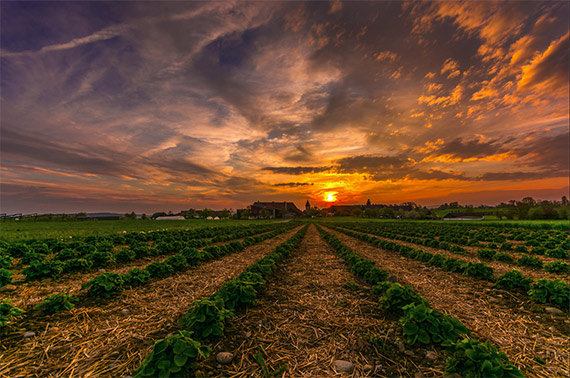
“Sunset” captured by Kannappan Sivakumar (Click Image to See More from Kannappan Sivakumar)
The catch is that if you want to be on top of a mountain for the gold hours, you have to either hike up in the dark before dawn or hike down after sunset. Either way, you’ll have a safer, more pleasant journey with a flashlight.
5. Lenses: The great thing about DSLRs is that you can change the lens to suit the occasion. A wide angle lens allows you to fit everything in but also has the effect of making everything except the foreground look smaller than it did in real life. In contrast, a telephoto lens will allow you to pick out one detail of the landscape. Sometimes the right detail is much more evocative than the whole mountain.
4. Tripod: In order to have a large depth of field, you need a small aperture. Sometimes, this requires a long exposure to compensate. That means there’s a danger of camera shake, unless you use a tripod.
3. Photoshop (or similar): Editing your photos on the computer can rescue all manner of problems, including mistakes in exposure or framing. If you don’t want to pay for Photoshop, there’s a free shareware package called GIMP which covers all the basics.
2. Camera: Obviously you can’t possibly take photos without this. As everyone knows, there are plenty of cameras on the market. Bear in mind that a more expensive camera will give you more flexibility, but not necessarily more quality.
1. And the most important piece of equipment of all: your brain.
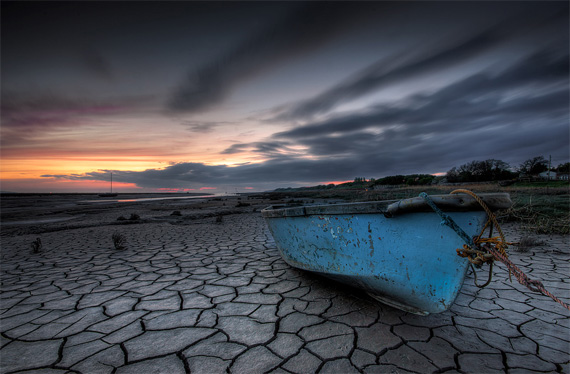
“That Sinking Feeling” captured by Mark Broughton (Click Image to See More From Mark Broughton)
The best camera in the world won’t take good photos if a monkey’s using it. On the other hand, I’ve seen great photos taken with a biscuit tin. Yes, really, a biscuit tin with a pinhole in the front and photographic paper inside. Of course, it’s much easier to take great photos with a good camera, but you still need to know what you’re doing. Otherwise you’ll have “all the gear and no idea.”
About the Author
Let me help you to take great landscape photographs. To read more tips and tricks, click here.
Like This Article?
Don't Miss The Next One!
Join over 100,000 photographers of all experience levels who receive our free photography tips and articles to stay current:

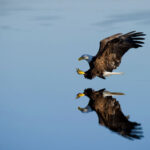

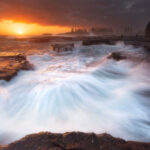
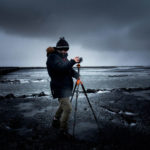

Heads off for your concept of photo shot, I really like your pictures and appreciate your hard work in it.
Thanks for sharing these pictures with your visitors.
I’d add a step ladder. The extra height gained using one really adds depth to an image.